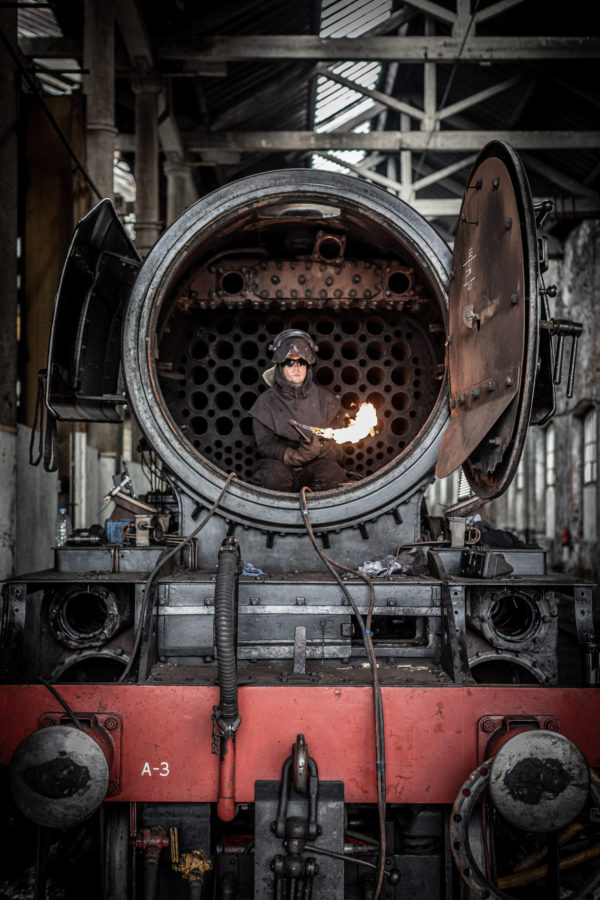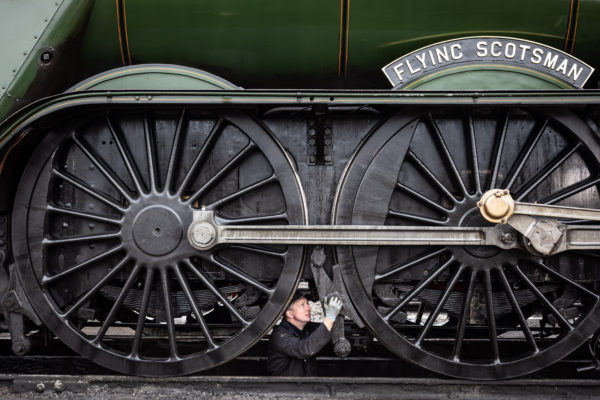Friday 24 February 2023, marked 100 years since Flying Scotsman, the world’s most famous steam locomotive, set off on its first journey from the sheds at Doncaster Works. Now a national treasure, Flying Scotsman is a star attraction in the collection of the National Railway Museum (part of the Science Museum Group) in York, where it is a working museum exhibit. In a new poem released, The Making of Flying Scotsman, UK Poet Laureate Simon Armitage has paid homage to the celebrity engine, a feat of British design and engineering which has inspired a love of rail in generations of families and become synonymous with the golden age of rail travel. Commenting on the inspiration behind his new work, Simon Armitage said: “Flying Scotsman is a poem. I just had to write it down.” The Making of Flying Scotsman is now on display as part of Flying Scotsman: 100 Years, 100 Voices, a new exhibition at the National Railway Museum, which launched in February and showcases the legacy of the locomotive through the lives it has touched.

In its latest excursion, following a new lick of paint, Flying Scotsman to surprised travellers at Edinburgh Waverley station where it made a fleeting appearance. To mark the occasion, Simon Armitage read The Making of Flying Scotsman whilst dancers from the Royal Scottish Country Dance Society performed The Flying Scotsman, devised by Hugh Thurston in 1966. The event was rounded off with a performance from Celtic rock band, the Red Hot Chilli Pipers. Also announced are a series of new Scottish events, including two main line excursions and a heritage railway visit.
Designed by Sir Nigel Gresley, Flying Scotsman was the first locomotive of the newly formed LNER (London and North Eastern Railway) and originally numbered 1472. It was given its name in 1924 after the daily 10.00 London King’s Cross to Edinburgh Waverley rail service. The locomotive went on to operate in service until 1963 and later in preservation, which included tours of the USA, Canada and Australia, where it captured the hearts of millions. In 2004, a campaign spearheaded by the National Railway Museum to save the locomotive for the nation amassed the support of thousands, confirming its status as a national treasure. The appeal to keep the steam icon in Britain was supported by a £1.8 million grant from the National Heritage Memorial Fund and the generosity of the public. Its restoration was also completed with the help of a Heritage Lottery Fund grant of £275,000.
The most famous steam locomotive in the world

Those unable to see the locomotive on its centenary tour have the opportunity to experience Flying Scotsman through exhibitions including Flying Scotsman: 100 Years, 100 Voices, Flying Scotsman VR and with collectible memorabilia available from the Science Museum shop. Highlights include a Flying Scotsman centenary train set, a £2 coin from The Royal Mint, featuring Flying Scotsman in vivid colour—a rarity on £2 coins, with the last coloured £2 coin released over 20 years ago and a new children’s book by bestselling author Michael Morpurgo: Flying Scotsman and the Best Birthday Ever, which tells the story of a little girl called Iris who dreams of being a train driver when she grows up.
Judith McNicol, Director of the National Railway Museum, said: “Edinburgh Waverley is a fitting location to mark the centenary of the world’s most famous express passenger locomotive. It was here that Flying Scotsman completed its record-breaking, non-stop journey between London and Edinburgh in 1928 and Edinburgh is also the birthplace of Sir Nigel Gresley, Flying Scotsman’s designer. Today, Flying Scotsman is an undoubted star of the National Railway Museum’s collection and is recognised around the world as a triumph of British ingenuity and engineering. Flying Scotsman will now spend the rest of the year travelling across the country to give people the chance to see the engine for themselves and to take part in this special anniversary, from free static displays to rail tours to the Centenary Festival at Locomotion.”
Alex Hynes, Managing Director of Scotland’s Railway, continued: “Edinburgh Waverley was honoured to host a visit from Flying Scotsman on such a special occasion and our team has pulled out all the stops for this special occasion. The most famous steam locomotive in the world always draws a crowd. Visitors to Princes Street Gardens, just across the road from Waverley, will see a familiar Flying Scotsman theme when the world’s oldest Floral Clock blooms later this year too. Make sure to pop in to see it while on your way to the station.”
Flying Scotsman was built in Doncaster in February 1923, as an A1 class locomotive for the newly formed LNER and converted to an A3 class in 1947. It was the first locomotive of the newly formed LNER (London and North Eastern Railway). Designed by Sir Nigel Gresley and numbered 1472, the locomotive was not named Flying Scotsman until the following year when it was picked to attend the British Empire Exhibition in London and renumbered 4472. Today the locomotive is owned by the National Railway Museum in York and is operated and maintained by Riley & Son (E) Ltd, based in Heywood, Greater Manchester.
To find out more about Flying Scotsman and to hear more about centenary plans as they are announced, visit www.railwaymuseum.org.uk/flying-scotsman.
Main photo: Flying Scotsman at Kings Cross Station, London. Photo: Olgun Kordal/Science Museum Group.

